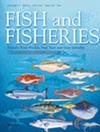利用时空模型对鱼类丰度进行概率预测以支持渔业管理
IF 6.1
1区 农林科学
Q1 FISHERIES
引用次数: 0
摘要
时空物种分布模型(SDMs)是支持渔业管理的宝贵工具,因为它们考虑了长期和时间变化的未测量变化(空间和时空变化),从而提供比简单SDMs更准确和统计有效的估计。然而,时空sdm在鱼类丰度概率预测中的应用受到两个主要挑战的阻碍。首先,缺乏围绕利用时空SDM生成预测所需的决策的指导。其次,利用时空sdm有效产生预测的功能有限,同时也传播了初始条件和过程误差的不确定性。我们开发了利用时空sdm进行预测的新方法,该方法允许利用时空sdm进行有效预测,并量化不同模型成分对预测不确定性的影响。我们通过两个对比应用来说明我们的方法:西海岸新西兰鲷鱼(Chrysophrys auratus),使用渔业数据和检查回顾性预测;和白令海毛鳞鱼(Mallotus villosus),采用独立于渔业的数据并对2100年进行预测。应用表明,时空变化应包含在时空sdm中以产生预测,以解释数据中更大比例的变异性,从而提供更准确的人口趋势重建,并更好地表征预测的不确定性。我们的研究结果还强调,时空sdm预测在数据丰富的情况下效果最好,特别是当鱼类数据的时间序列相对较长时。我们的方法可以帮助解锁时空sdm的使用,进行短期和长期预测,为渔业管理者提供更好的信息,并为未来的数据收集提供信息。本文章由计算机程序翻译,如有差异,请以英文原文为准。
Probabilistic Forecasts of Fish Abundances With Spatio‐Temporal Models to Support Fisheries Management
Spatio‐temporal species distribution models (SDMs) are valuable tools to support fisheries management, as they account for long‐term and time‐varying unmeasured variation (spatial and spatio‐temporal variation), thereby providing more accurate and statistically efficient estimates than simpler SDMs. However, the application of spatio‐temporal SDMs for probabilistic forecasts of fish abundances has been slowed by two main challenges. First, guidance surrounding the decisions needed to generate forecasts with a spatio‐temporal SDM is lacking. Second, there is limited functionality to efficiently produce forecasts with spatio‐temporal SDMs while also propagating uncertainty about initial conditions and process errors. We developed new approaches to forecasting with spatio‐temporal SDMs, which allow for efficient predictions with spatio‐temporal SDMs and quantifying the influence of different model components on prediction uncertainty. We illustrate our approaches with two contrasting applications: west coast New Zealand snapper (Chrysophrys auratus Mallotus villosus
求助全文
通过发布文献求助,成功后即可免费获取论文全文。
去求助
来源期刊

Fish and Fisheries
农林科学-渔业
CiteScore
12.80
自引率
6.00%
发文量
83
期刊介绍:
Fish and Fisheries adopts a broad, interdisciplinary approach to the subject of fish biology and fisheries. It draws contributions in the form of major synoptic papers and syntheses or meta-analyses that lay out new approaches, re-examine existing findings, methods or theory, and discuss papers and commentaries from diverse areas. Focal areas include fish palaeontology, molecular biology and ecology, genetics, biochemistry, physiology, ecology, behaviour, evolutionary studies, conservation, assessment, population dynamics, mathematical modelling, ecosystem analysis and the social, economic and policy aspects of fisheries where they are grounded in a scientific approach. A paper in Fish and Fisheries must draw upon all key elements of the existing literature on a topic, normally have a broad geographic and/or taxonomic scope, and provide general points which make it compelling to a wide range of readers whatever their geographical location. So, in short, we aim to publish articles that make syntheses of old or synoptic, long-term or spatially widespread data, introduce or consolidate fresh concepts or theory, or, in the Ghoti section, briefly justify preliminary, new synoptic ideas. Please note that authors of submissions not meeting this mandate will be directed to the appropriate primary literature.
 求助内容:
求助内容: 应助结果提醒方式:
应助结果提醒方式:


